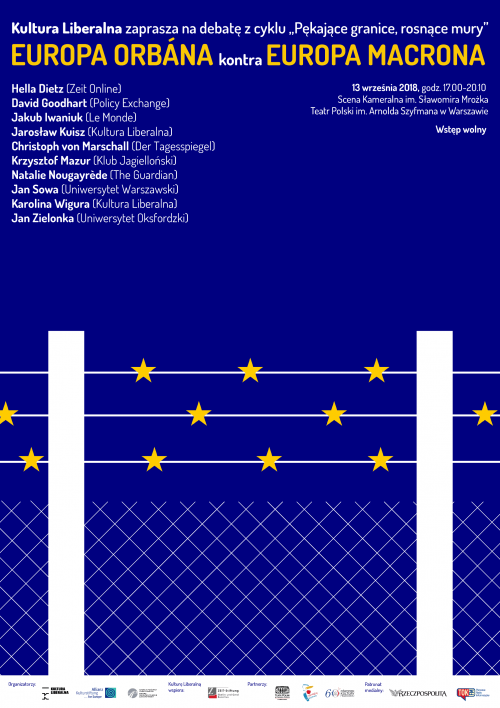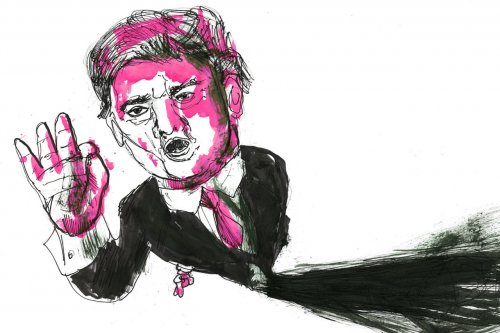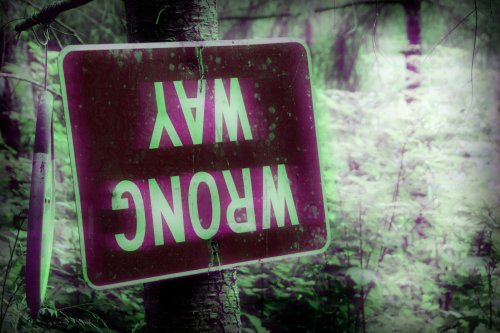 But they undeniably have one virtue – they serve as a starting point for a more profound debate. Tadeusz Różewicz, Wisława Szymborska, Justyna Bargielska – only time will tell if their collections deserve the title of the best poetry book of the year. But this group, named relatively often, must immediately be supplemented with the book Białe krzesła [White chairs], which Krystyna Dąbrowska published six years after her first poetry volume. Dąbrowska never appears in the summings-up but the fact itself that her debut was not premature and she made us wait quite long for another book, should give a pause.
But they undeniably have one virtue – they serve as a starting point for a more profound debate. Tadeusz Różewicz, Wisława Szymborska, Justyna Bargielska – only time will tell if their collections deserve the title of the best poetry book of the year. But this group, named relatively often, must immediately be supplemented with the book Białe krzesła [White chairs], which Krystyna Dąbrowska published six years after her first poetry volume. Dąbrowska never appears in the summings-up but the fact itself that her debut was not premature and she made us wait quite long for another book, should give a pause.
White plastic chairs, objects of daily use such as a bed, a broom, a pair of shoes – it is in them rather than decorative armchairs that the poet is looking for a metaphor of everyday life. It is them, sometimes shoddy, uncomfortable, witnessing to the bad taste of their makers, that she regards as closer to poetry when worn by praying old rabbis, touching the stones of the Crying Wall with their foreheads. For a text full of glamour, which sparkles and seduces with words, is not poetry. Much more of it is contained in the grey mud stretching up to the horizon and turning into mother-of-pearl for a second when light falls upon it. Then it fades, changes colour, congeals – it is simply waiting for someone to give it shape, just like “clay waiting for the sculptor”. All depends on the point of view, writes Dąbrowska, “Sometimes I look into your eyes, sometimes with your eyes”.
What do they have in common: a broom-seller, a hunchbacked dignitary and a kerchief-wearing girl from a hostel, who is “alert like a half-wide cat” and would not be touched, does not say where she comes from but happily tells stories about life in Jerusalem? The characters, animals and even object we look at in the poems, form the building matter of Dąbrowska’s poetry and constitute its force. Although in the poem Oceanarium particular fish differ from each other, a person looking at them through the glass sees harmony: “Nobody scares off, chases, eats anybody else.” A necessary condition of harmony is isolation, for the aquarium is divided into compartments with transparent glass, not readily perceivable. From the perspective proposed by Dąbrowska – looking at people from a distance in their everyday wanderings from chore to chore – a harmony is born between the protagonists of these poems but it is difficult to avoid the impression that this harmony is an illusion.
So can we conclude that Dąbrowska is saying the following: our meetings, our bonds, our sense of closeness will never be fully accomplished, for we are separated from each other by an invisible glass wall? On the other hand the wall is seen by an outside observer, looking at the fish from the side. The answer to this question is brought by the poem The Table, where a seemingly kind-hearted piece of furniture on the porch turns into a linden gnome when the table-cloth is removed. We can also glimpse an answer in the work Dining Hall, perhaps the crucial poem in the book – the dining hall is a meeting place for people who know nothing about each other and what unites them is a mere common purpose. Some put on white aprons: “For an hour they are neither young nor old, / they have no plans, professions, biographies,” they sit silently. Others start talking only here. Dąbrowska adds casually: “Let someone see people rather than shaggy apparitions.” So I treat the poet’s entreaty not as an expression of bitterness caused by the fact that harmony is an illusion but as an appeal to look at the world with care. As an appeal not to judge, not to despise what offends us or what we can’t comprehend – after all there is a barrier between us and the others.
Of course, when you see a barrier you can try to demolish it. A lone sawfish suddenly emerges from the green depth of the aquarium and starts to hack at the thickest panes of glass. Will it be successful? Not very likely. Even the fact that the struggle was taken up “single-handed” seems very suggestive. No less suggestive is the picture of Islam, Egypt, themes invoking the Jewish world. Dąbrowska doesn’t ask, “In what way can I get to understand you?” but “Where do I look from to see you?” and this is the key to the poet’s world – peering, gazing. Interestingly, Dąbrowska’sfirst book of poetry was called Travel Agency. Travel agencies prepare you for changing your locality while white chairs might be synonyms of immobility, staying in one place, striking roots. Peering is different from a train or airplane and from a chair, sitting at the Crying Wall. Białe krzesła is a modest book – sparing or even cautious in its use of words, rather short. Despite all this it seems to be the poetic book of the year, it doesn’t impose the world presented by Dąbrowska on anyone and it doesn’t attempt to go beyond literature. You could say that Dąbrowska’s poems are there just to exist – their own, selfless, focused – and they don’t turn their backs on us. The sentences are seemingly inconspicuous, it would be vain to look in them for gestures which invigorate a description or a story in a spectacular way, and yet they enchant and they are undeniably true. It has been long since I made a discovery of such magnitude among the poet’s of the young generation but can we really speak about a discovery here? Perhaps we should just say that Dąbrowska non-hastily made another step on the path which I will now observe with attention and appetite for more.
Book:
Krystyna Dąbrowska, Białe krzesła, Wojewódzka Biblioteka Publiczna i Centrum Animacji Kultury, Poznań 2012.




